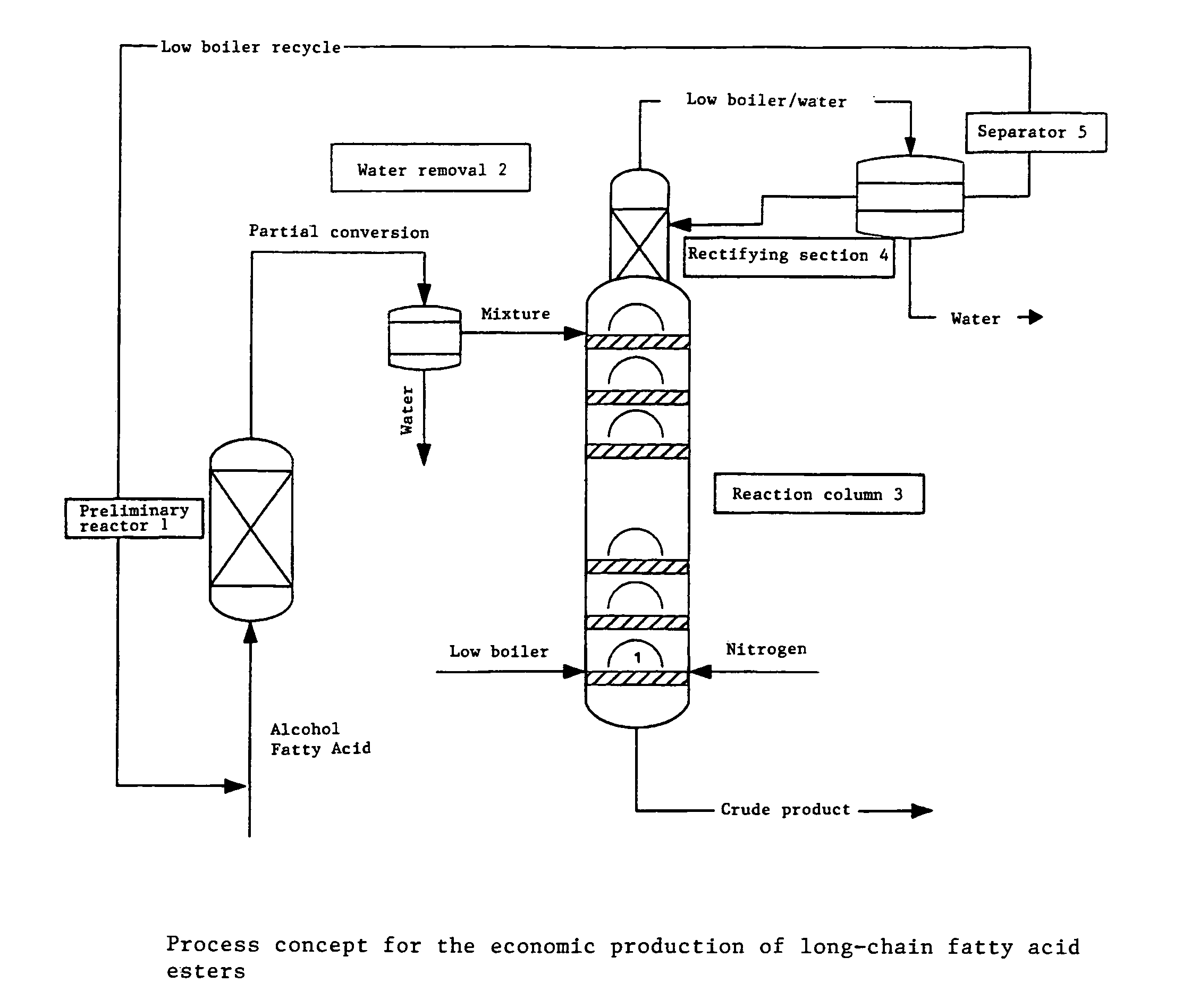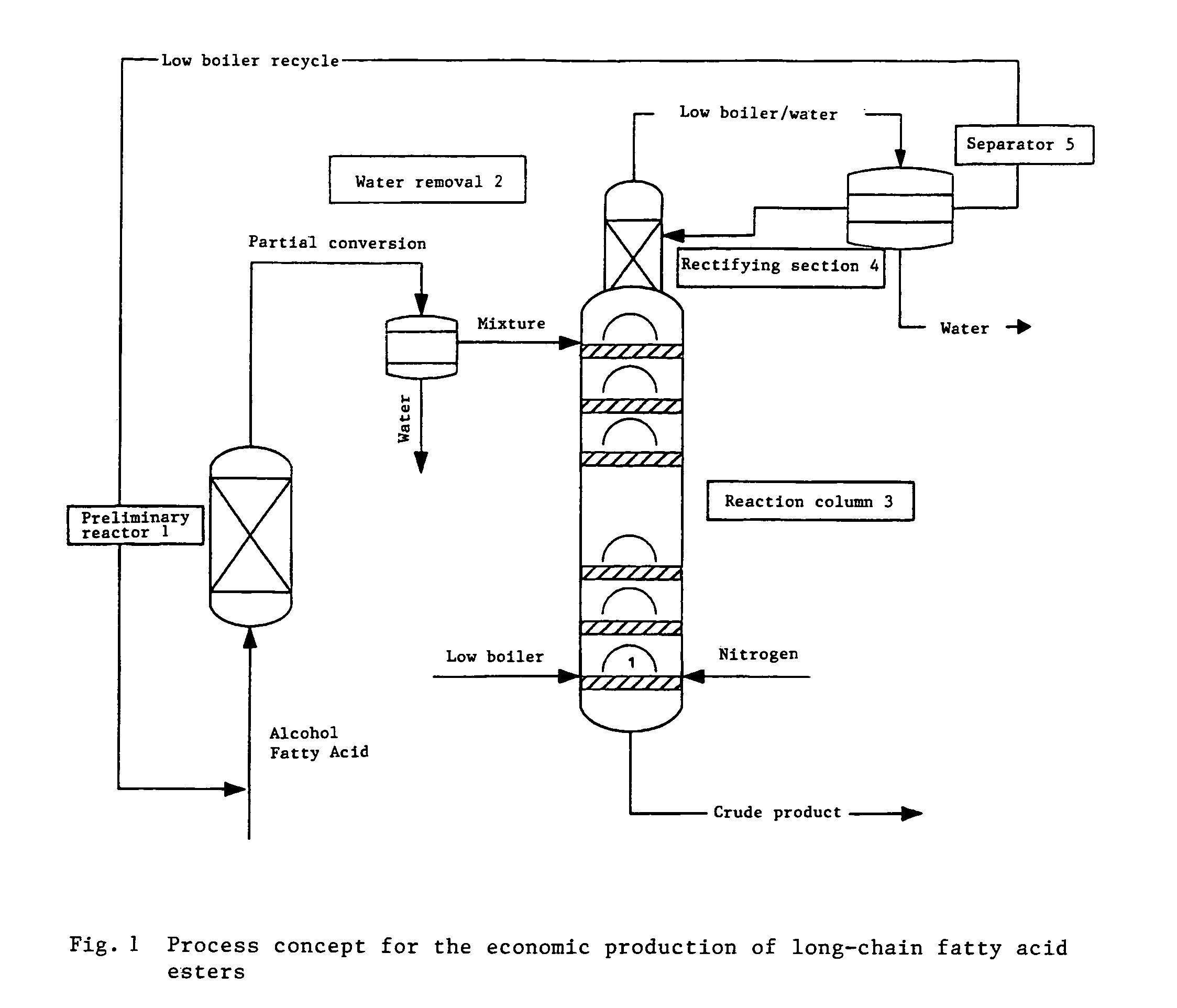Method for producing linear or branched fatty acid esters by means of heterogeneously catalysed reactive rectification with an upstream reactor
a technology of heterogeneous catalysis and rectification, which is applied in the direction of fatty oil/fats refining, fatty oil/fats recovery from waste, fatty-oil/fat separation, etc., can solve the problems of high catalyst loss and product loss, discontinuous process, dead times during filling, emptying, heating and cooling, etc., and achieve the effect of reducing the viscosity of the reaction mixtur
- Summary
- Abstract
- Description
- Claims
- Application Information
AI Technical Summary
Benefits of technology
Problems solved by technology
Method used
Image
Examples
example 1
[0045]Amberlyst 17 (XE-386), a product of Rohm & Haas, was used as the catalyst for the reaction. The catalyst was accommodated in a heated glass double jacket (Vmax=200 ml, D=20 mm) as a fixed-bed reactor and in the reaction column (27 bubble plates, D=50 mm, 1 bubble cap per plate). The following esterification of acetic acid with glycerol was carried out at 85° C. The glycerol was fed into the preliminary reactor together with part of the acetic acid (AA / Gly=4:1 [mol:mol]). The volumetric flow rate was 169 g / h. After the first reaction stage, the conversion amounted to 56%. The pre-esterified product was fed in as a liquid at the uppermost plate of the reaction column. The acetic acid was superheated in countercurrent and used in vapor form with a volumetric flow rate of 268 g / h. Acetic acid / water was removed at the head of the column and the reaction product at the bottom of the column. The head pressure in the column was 200 mbar. The conversion, based on glycerol, amounted to ...
example 2
[0047]The procedure described in Example 1 was repeated using Amberlyst 17 (XE-386), a product of Rohm & Haas, as catalyst for the reaction. The following esterification of acetic acid with glycerol was carried out at 85° C. The glycerol was fed into the preliminary reactor together with part of the acetic acid (AA / Gly=1:1 [mol:mol]). The volumetric flow rate was 174 g / h. After the first reaction stage, the conversion amounted to 23.5%. The pre-esterified product was fed in as a liquid at the uppermost plate of the reaction column. The acetic acid was used as vapor (countercurrent) with a volumetric flow rate of 262 g / h. Acetic acid / water was removed at the head of the column and the reaction product at the bottom of the column. The conversion, based on glycerol, amounted to 65% at the bottom of the column. For working up, the reaction product was after-reacted with acetic anhydride, acetic acid was removed and triacetin was distilled.
PUM
 Login to View More
Login to View More Abstract
Description
Claims
Application Information
 Login to View More
Login to View More - R&D
- Intellectual Property
- Life Sciences
- Materials
- Tech Scout
- Unparalleled Data Quality
- Higher Quality Content
- 60% Fewer Hallucinations
Browse by: Latest US Patents, China's latest patents, Technical Efficacy Thesaurus, Application Domain, Technology Topic, Popular Technical Reports.
© 2025 PatSnap. All rights reserved.Legal|Privacy policy|Modern Slavery Act Transparency Statement|Sitemap|About US| Contact US: help@patsnap.com


